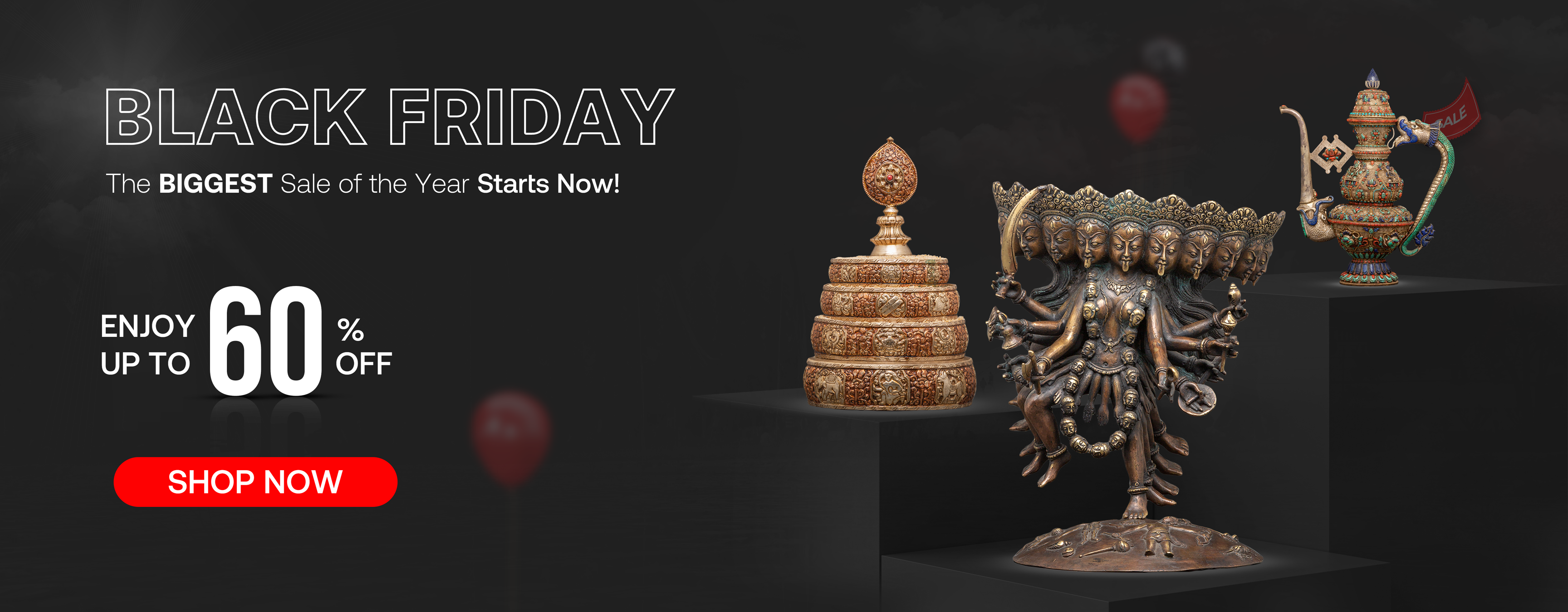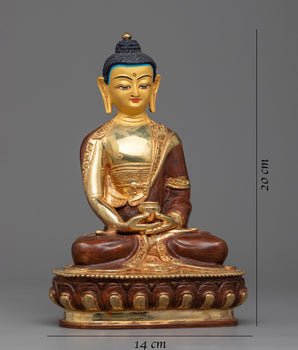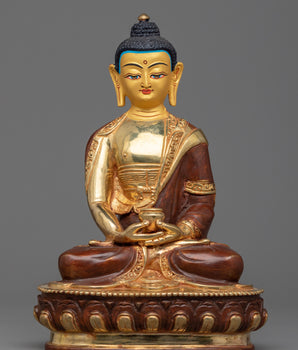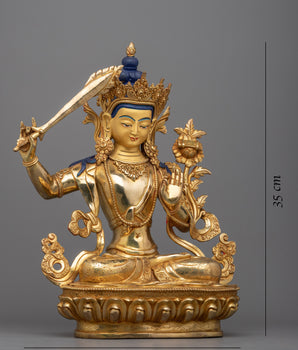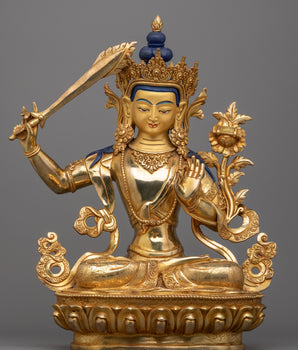Who is a Karmapa?
The Karmapa is the head of the Karma Kagyu—one of the four major schools of Tibetan Buddhism. Revered as the first consciously reincarnating lama (tulku) lineage, the Karmapas embody activity (karma) and compassion. Each incarnation protects and transmits the Kagyu’s core practices—especially Mahamudra meditation and the Six Yogas—while adapting the teachings to the needs of their time.
Iconic identifier: the Black Crown (Vajra-mukut)—a distinctive black hat with a golden diadem—symbolizes the Karmapa’s enlightened activity.
Karmapa Thangka: Click here to veiw in details
Brief Introduction to the Kagyu School of Buddhism
The Kagyu (bka’ brgyud, “oral lineage”) is one of the four major schools of Tibetan Buddhism alongside Nyingma, Sakya, and Geluk. It traces its transmission from Tilopa → Naropa → Marpa → Milarepa → Gampopa, blending yogic meditation with monastic discipline. Kagyu places a distinctive emphasis on direct experience—especially Mahamudra (realizing the nature of mind) and the Six Yogas—passed from master to disciple through empowerments and pith instructions.
Today, the Kagyu family includes several sub‑schools; the largest is Karma Kagyu (headed by the Karmapa). Other branches include Drikung Kagyu and Drukpa Kagyu, among others. Historically important centers include Tsurphu (Tibet) and Rumtek (Sikkim), with active monasteries and lay communities worldwide. Typical Kagyu training integrates ngöndro preliminaries, guru yoga, short and long retreats (including three‑year retreats), and compassionate service.
The Black Hat (Vajra-Mukut) of the Karmapa
The Karmapa’s Black Hat is the signature emblem of the Karma Kagyu lineage, representing the spontaneous enlightened activity that benefits beings. In art, it’s the #1 way to recognize a Karmapa.

Origins & Legends
-
“Invisible” crown: Kagyu tradition holds that the first Karmapa, Düsum Khyenpa (1110–1193), received an invisible black crown woven from the hair and blessings of ḍākinīs, signifying his awakened activity.
-
“Visible” crown: Centuries later, a ceremonial Black Hat (a physical replica) was created so ordinary beings could connect with this blessing. It became closely associated with the 5th Karmapa, Deshin Shekpa (1384–1415), whose era popularized the Black Crown Ceremony.
What the Black Hat Looks Like (Iconography)?
-
Color & material: deep black (cloth or lacquered fabric), often with a gold diadem band and a central sun–moon/vajra emblem.
-
Shape: tall, slightly peaked front with two side lappets that frame the ears/cheeks.
-
Robes: worn with monastic robes (no royal ornaments).
Meaning & Symbolism
-
Black (space/emptiness): symbolizes the limitless expanse of mind’s nature.
-
Gold diadem (wisdom): the luminosity/clarity aspect of awareness.
-
Sun–moon/vajra emblems: inseparability of wisdom and compassion; indestructible awakened activity.
-
Whole crown: the Karmapa’s karmic activity—swift, fearless, and responsive.
Quick Timeline: The Sixteen Karmapas
Click here to explore our Karmapa lineage Statues Set
-
Düsum Khyenpa (1110–1193) – The Knower of the Three Times
Disciple of Gampopa. Founded the Karma Kagyu and established key monasteries; famed for realization of Mahamudra. -
Karma Pakshi (1204–1283) – Bridge to the Mongol Court
Spread Kagyu teachings to Yuan China; known for miraculous displays and deep meditation states. -
Rangjung Dorje (1284–1339) – Scholar-Yogi
Synthesized Mahamudra with Dzogchen perspectives; prolific author on mind and consciousness. -
Rolpe Dorje (1340–1383) – Protector of Lineage
Strengthened monastic codes and retreat culture; maintained transmission continuity during political shifts. -
Deshin Shekpa (1384–1415) – Black Crown Ceremony Patron
Invited to the Ming court; received an external Black Crown replica, popularizing the Crown Ceremony. -
Thongwa Dönden (1416–1453) – Institution Builder
Expanded monasteries and standardized education for Karma Kagyu monks and meditators. -
Chödrak Gyatso (1454–1506) – Commentator & Teacher
Clarified practice manuals; emphasized guru–disciple transmission and ethical discipline. -
Mikyö Dorje (1507–1554) – Philosopher & Reformer
Authored key treatises; elevated textual study within a yogic lineage, refining view and conduct. -
Wangchuk Dorje (1556–1603) – Mahamudra Systematizer
Wrote concise, influential Mahamudra manuals still used in Kagyu training today. -
Chöying Dorje (1604–1674) – Artist Karmapa
Master sculptor and painter; his itinerant life preserved the lineage in turbulent times. -
Yeshe Dorje (1676–1702) – Restorer
Repaired pilgrimage sites and lineages after regional conflicts; revitalized practice programs. -
Changchub Dorje (1703–1732) – Healer & Yogin
Remembered for compassion and medical knowledge; led retreats and guided yogic communities. -
Dudul Dorje (1733–1797) – Practitioner-Scholar
Produced commentaries; safeguarded transmissions and monastic education. -
Thegchog Dorje (1798–1868) – Revivalist
Supported treasure revealers (tertons) and cross-lineage exchange while keeping Kagyu core intact. -
Khakhyab Dorje (1871–1922) – Modernizer
Expanded printing of Kagyu texts; emphasized both study and retreat, bridging tradition and modernity. -
Rangjung Rigpe Dorje (1924–1981) – Global Ambassador
Re-established Kagyu centers in exile; introduced Kagyu teachings worldwide while preserving monastic training.
The Living Transmission of Kagyu Tradition:
The Karmapas are the golden thread connecting Tilopa–Naropa–Marpa–Milarepa–Gampopa to today.
-
Mahamudra Mastery: Many Karmapas composed practice guides that define how Kagyu meditators train in view, meditation, and conduct.
-
Activity of Compassion: The Black Crown symbolizes spontaneous enlightened activity benefiting beings—through building monasteries, writing texts, guiding retreats, and engaging societies beyond Tibet.
-
Adaptation Across Eras: From Mongol and Ming courts to global diaspora, each Karmapa adapts form without losing essence.
Karma Kagyu Today: Two Recognized 17th Karmapas
After the passing of the 16th Karmapa (Rangjung Rigpe Dorje, 1924–1981), two candidates were recognized by different senior authorities, leading to parallel recognitions within Karma Kagyu. Both lineages maintain monasteries, education systems, and global communities.
H.H. Ogyen Trinley Dorje — 17th Gyalwang Karmapa

Photo from: https://kagyuoffice.org/karmapa/
-
Recognized through the traditional search connected to Tsurphu Monastery (Tibet) and endorsed by the 14th Dalai Lama. In exile, he has been based in India (widely known for his residence at Gyuto Monastery).
-
His official website describes him as head of the 900‑year‑old Karma Kagyu lineage and spiritual guide to followers worldwide.
-
Emphasis on Mahamudra training, monastic education, environmental stewardship (e.g., eco‑monastic initiatives), nuns’ education, and diaspora community leadership. He regularly offers teachings, transmissions, and guidance for Kagyu institutions across Asia, Europe, and the Americas.
-
Seen by many as the custodian of the Black Crown tradition and the historical ties to Tsurphu/Rumtek.
H.H. Trinley Thaye Dorje — 17th Gyalwa Karmapa

-
Recognition & Lineage: Recognized as Karmapa by the 14th Shamarpa (Mipham Chökyi Lodrö), the senior Karma Kagyu lineage holder historically empowered to identify Karmapas.
-
Role as Presented: His official office presents him as the leader of the 900‑year‑old Karma Kagyu lineage.
-
Activities & Focus: Oversees a worldwide network of Karma Kagyu centers and educational projects; emphasizes meditation in daily life, bodhicitta as “inner wealth,” and lay/monastic training. He confers empowerments, teachings, and supports translation/education initiatives in Europe and Asia.
-
Symbolic Importance: Represents the continuity of recognition through the Shamarpa–Karmapa reciprocal lineage.
Conclusion: From Düsum Khyenpa to Rangjung Rigpe Dorje, All Karmapas carried the living heart of the Kagyu: direct experience of mind’s nature and compassionate activity in the world. Studying their lives offers a map of continuity and renewal, showing how a lineage remains timeless while meeting each era freshly.






